#caviids
Explore tagged Tumblr posts
Note
I gotta know- what subspecies are each Sprunki supposed to be, exactly? Its so unique and silly I HAVE to know.
AAA TYSM!! And another biology question!! I made a chart for this one:
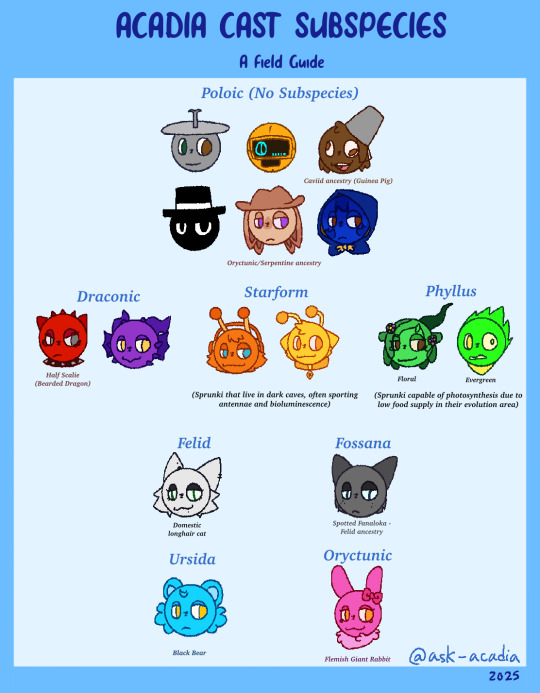
There were a few I already had a subspecies in mind for, mostly the animal-based sprunki, so I got to work fancying up the subspecies and their names! Tumblr made the text a bit hard to read so you might have to click to get the full resolution :(
Explanation for the subspecies down below!
POLOIC - NO SUBSPECIES These guys are the most direct descendants of the original polos that evolved into the sprunki we know today!
STARFORM Thought to be aliens due to their reclusive ancestors and glowing bodies, Starform sprunki are actually a cave-dwelling insectlike species that evolved a form of bioluminescence. This light most often shines on their antennae and tail tips, but can appear as invisible markings on their bodies too. Many of them have antennae to help them with spatial reasoning and detection of others nearby, since their eyesight is mediocre at best.
PHYLLOUS As the name suggests, these sprunki are based off of plants of various kinds. They have evolved photosynthesis in order to make up for a lack of food in the environment they evolved in. They are most commonly green, though they can be other colors! Phyllous sprunki that are brown or tan are usually sick, dying or dead, and may brown around wounds and scars.
WHAT IT SAYS ON THE TIN
Draconic - Dragons
Caviid - Guinea Pigs
Felid - Cats, commonly domestic but can refer to wild subspecies. Wenda is a domestic longhair or Norwegian forest cat.
Fossana - Fossa/Civets, specifically the Spotted Fanaloka in Gray's case!
Ursida - Bears
Oryctunic - Rabbits; a combination of the latin words for domestic rabbit. Pinki is a Flemish Giant <3 Tiny Oren obsessed with giant girlfriend
42 notes
·
View notes
Text
My favourite caviids
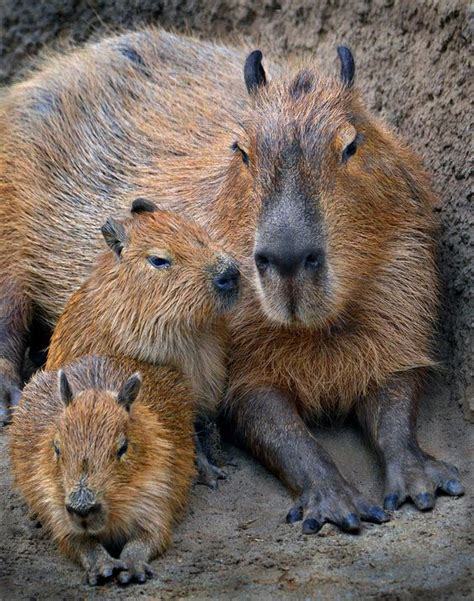

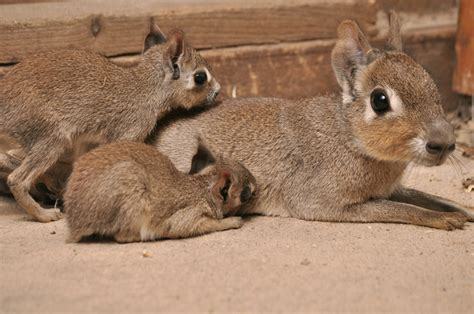
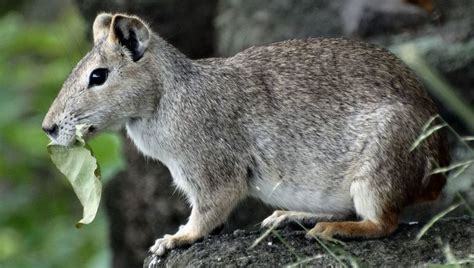

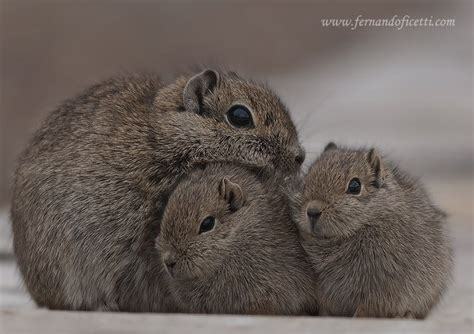
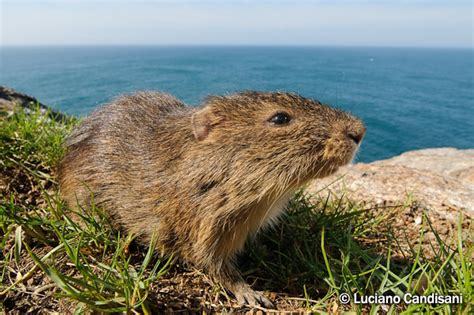



#caviidae#caviids#capybara#patagonian mara#chacoan mara#rock cavy#acrobatic cavy#common yellow toothed cavy#santa catarina's guinea pig#montane guinea pig#greater guinea pig#guinea pig#rodents#favourite animals#favourites
232 notes
·
View notes
Text
Some caviids.
The best rodent family.
Capybara (C h i g ü i r o)
Patagonian Mara
And Rock cavy

#animal#animal art#traditional art#capibara#patagonian cavy#patagonian mara#caviidae#caviids#rodentia#rodents#rock cavy#capybara
1 note
·
View note
Photo

Transcript for the text on the image under the cut:
PAGE 1
Spectember 2020 #08 | nixillustration.com | alphynix.tumblr.com Concept suggested by: anonymous
Giant Cavy-Ungulates
(Rodungulata)
The present-day Patagonian mara (Dolichotis patagonum) is a long-legged caviid with almost hoof-like digits on its feet, somewhat resembling a rabbit-deer. These unusual rodents are diurnal fast-running grazers, already rather convergent with ungulates – and so it's perhaps not too surprising that eventually this lineage produced the RODUNGULATES.
[Image: a modern mara, an animal that looks rather like a rabbit-headed deer.] The ancestral Dolichotis patagonum
Starting out as relatively small animals similar to early horses, rodungulates quickly increased in body size thanks to some of the physiological quirks of their ancestors. Along with both their chisel-like incisors and grinding molars being ever-growing, they were hindgut fermenters specializing in eating very high-fiber diets of tough vegetation – including plants toxic to most ruminants – and breaking it all down in their large intestines. While less efficient than ruminant digestion this system allowed them to feed in bulk and process their food much more rapidly, which at larger body sizes became a significant advantage.
So, much like the proboscideans and indricotheres before them, some of the rodungulates were able to become especially big mammals.
Reaching at least 3m tall at the shoulder (9′10″), the giant rodungulates range from heavily-built rhino-like forms to slender long-necked high browsers and tapir-like low-level browsers. Most of the largest species are ecosystem engineers similar to elephants, stripping bark, clearing trees, fertilizing soil, and creating areas of open grassland where other species can flourish in their wake.
[Image: a descendant of the mara that looks like a small horse or deer, with four hoof-like toes on its front feet and three on the back.] Cavihippus velox, a basal rodungulate convergent with early horses
PAGE 2
[Image: a heavily-built rodungulate that resembles a capybara with a rhino-like body. It has a thick bony dome on its forehead.] Pachybara tholussa, a rhino-like rodungulate. The “dome” of thickened bone on its head is used for flank-butting.
[Image: a long-snouted rodungulate with a body plan somewhere between a camel and an indricothere, with long slender legs, a long neck, and a sloping back.] Caviauchenia longinaris, a high-browsing rodungulate. Similar in body size to giraffes and mid-sized indricotheres, it uses a combination of a long neck and an unusually long snout to reach more vegetation.
[Image: a chunky vaguely tapir-like rodungulate with a tall blunt snout somewhat reminiscent of a moose or a ground sloth.] The slightly smaller Theriosonax altirhinus is more specialized for browsing, with a semi-prehensile upper lip. Its large nose acts as a resonating chamber for loud calls.
[Image: a different view of Theriosonax's head with its mouth open, showing its large chisel-like incisor teeth.] Like all rodungulates, its rodent ancestry is most obvious from its chisel-like incisor teeth.
#spectember 2020#spectember#speculative evolution#specevo#rodungulates#science illustration#art#not paleoart#pachybara
294 notes
·
View notes
Text
Aw yes, Southamerican rabbits and hares.
Mi favorite -non- lagomorphs.
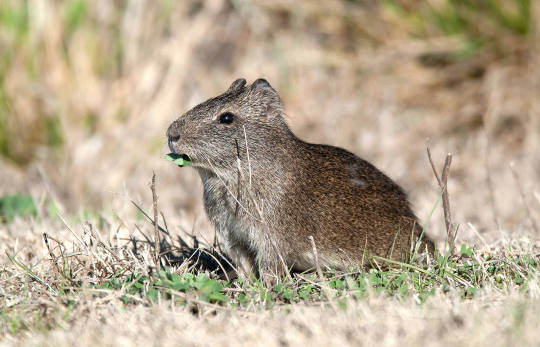

#the power of convergent evolution babe#caviids are my fav rodent family#guinea pig#patagonian mara#they deserve their own stories
15 notes
·
View notes